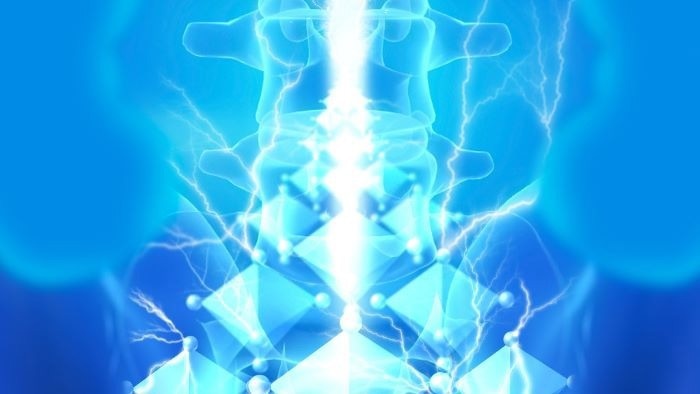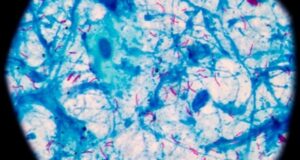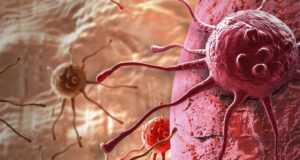A new electrically active transplantable material that can help to regrow cells in the brain and spinal cord could redefine the recovery prospects of patients who sustain life-altering injuries or suffer from neurodegenerative diseases.

The 3D piezoelectric cellulose composite, invented by experts at the University of Bath and Keele University and detailed in a research paper published today, can be used as a bespoke ‘scaffold’ into which neural stem cells (NSCs) can be precision-delivered to injury sites, helping to effectively repair and regenerate neurons and associated tissues crucial for recovery.
The team of engineers, chemists and neuroscientists say the material offers the potential to create new treatments to help restore the motor, sensory or cognitive functions of people who have suffered central nervous system (CNS) injuries, or neurodegenerative diseases such as Alzheimer’s and Parkinson’s Disease. Caused by trauma to the brain or spinal cord, CNS injuries affect millions of people worldwide and are among the most challenging medical conditions to treat.
This is a groundbreaking biomaterial, which has the potential to redefine the prospects of recovery from central nervous system injuries or neurodegenerative diseases. It offers the hope of future treatments that could help patients regain crucial life-changing functions.
It also offers clinicians the possibility to create therapeutic tools for treating conditions of this type and establishes a new class of versatile biomaterials that combine mechanical, electrical and biological cues.
As with any new medical technology, there are many steps still to take to move this from lab bench to bedside, but we are encouraged to have been able to create a new, highly sophisticated and sustainable composite that combines several desirable qualities and could be used in a range of applications.”
Dr. Hamideh Khanbareh, senior lecturer, University of Bath’s Department of Mechanical Engineering and member, Centre for Integrated Materials, Processes & Structures (IMPS)
Multifunctional material offers therapeutic potential
Detailed in new research published today (6 January 2025) in the journal Cell Reports Physical Science, the composite material is made of cellulose and potassium sodium niobate (KNN) piezo-ceramic particles. The ‘scaffold’ implants that can be created with it look like small, paper-like tubes, which could be made bespoke for individual patients.
Key to the composite’s clinical potential is its versatile, multifunctional nature, and the use of cellulose – a widely-available structural component of plants and algae – mean it is highly sustainable.
Created through a process called directional freeze casting, its structure is optimized to encourage the growth of cells in a specific direction – as they grow in a spinal cord – meaning they can repair and re-join tissue damaged by traumatic injuries, and repair electrical pathways that carry signals from the brain. The material is also porous, with space for new cells spaces to grow into naturally, mimicking the three-dimensional network in the body.
Furthermore, it is biodegradable by enzymes, so can be made to dissolve within the body once the implant has served its function.
Most importantly, the ceramic microparticles have piezoelectric properties – meaning they create electrical charge when placed under stress or through body movement, giving stem cells the stimulation they need to grow.
The combination of these properties, and the way they allow a scaffold to be structured, make the material ideal as a vehicle for the delivery of neural stem cells, and for them to grow and differentiate into the functional neural cells required for repair and recovery.
Bespoke treatments a potential application
Dr Vlad Jarkov, a PhD researcher in Bath’s Department of Chemistry, was the primary investigator of the research. He says the material offers significant potential for future bespoke treatments: “One way this could be applied would be to use a CT scan of an injury site to model a very precise 3D implant that could address a patient’s specific needs by accurately bridging the gaps caused by injury to their brain or spinal cord.
“Focusing on finding a way to aid the growth neural stem cells is very challenging, as they are among the most complex cells in our bodies. We had to draw on a range of expertise – in mechanical engineering, chemistry, neuroscience and materials science, to reach this point.
“As an advanced bespoke medical treatment, it requires further development to become a reality in our hospitals, but we are hopeful this is the start of finding a solution to helping the many people around the world who suffer life-altering brain and spinal cord injuries.”
Future development of the composite and implants will include tests of biocompatibility and efficacy, further optimization of the materials and freeze-casting methods and scale-up of manufacturing, as well as regulatory approval.
Source:
Journal reference:
Jarkov, V., et al. (2025). 3D piezoelectric cellulose composites as advanced multifunctional implants for neural stem cell transplantation. Cell Reports Physical Science. doi.org/10.1016/j.xcrp.2024.102368.




